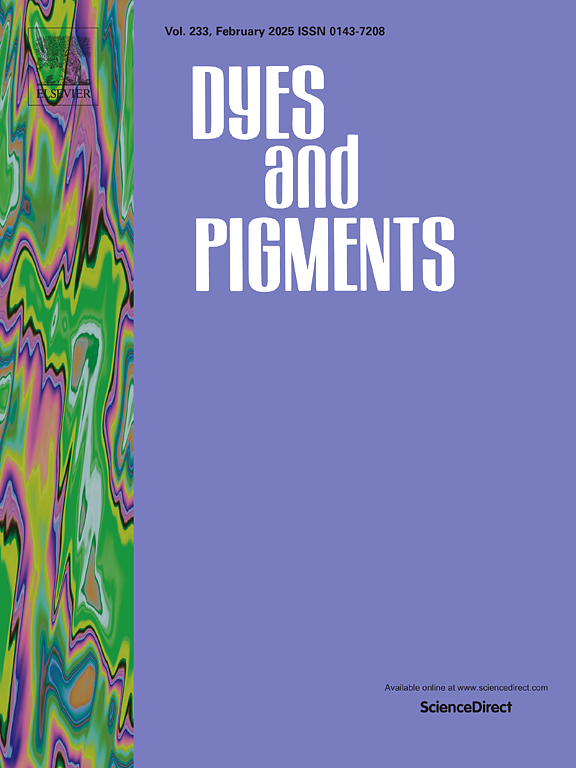Highly fluorescent 3-perylenyldiphenylphosphane compounds: An experimental and theoretical study
IF 4.1
3区 工程技术
Q2 CHEMISTRY, APPLIED
引用次数: 0
Abstract
The perylene derivative, 3-perylenyldiphenylphosphane (PPh2Per, 1), was prepared and used to synthesize the oxidized P(V) compounds A = PPh2Per (A = O (2); A = S (3)). Substitution reactions led to mononuclear gold(I) complexes [AuX(PPh2Per)] (X = Cl (4); X = C6F5 (5)), [AuX(S=PPh2Per)] (X = Cl (6); X = C6F5 (7)) and palladium(II) complexes trans-[Pd(C6F5)2(PPh2Per)2] (8). X-ray single crystal studies of compounds 5 and 7 confirmed the expected structures. The UV–Vis absorption spectra display intense peaks in the visible region with maxima from 454 to 461 nm. A DFT study was performed for the absorption spectra of ligands and complexes, showing that the lowest most intense transition is a HOMO → LUMO transition in the perylene core, although affected by functional group and metallic fragment. The ligands and their complexes are fluorescent in solution, due to the perylene fragment, showing an emission in the range 450–550 nm, with maxima from 467 to 472 nm. Quantum yield starts at 13 % for the phosphane and increases dramatically to the range of 63–87 % after oxidation or coordination to a metal fragment. This work illustrates how the PET effect can be used to recover the initial extremely intense emission of free unfunctionalized perylene ring system.

求助全文
约1分钟内获得全文
求助全文
来源期刊

Dyes and Pigments
工程技术-材料科学:纺织
CiteScore
8.20
自引率
13.30%
发文量
933
审稿时长
33 days
期刊介绍:
Dyes and Pigments covers the scientific and technical aspects of the chemistry and physics of dyes, pigments and their intermediates. Emphasis is placed on the properties of the colouring matters themselves rather than on their applications or the system in which they may be applied.
Thus the journal accepts research and review papers on the synthesis of dyes, pigments and intermediates, their physical or chemical properties, e.g. spectroscopic, surface, solution or solid state characteristics, the physical aspects of their preparation, e.g. precipitation, nucleation and growth, crystal formation, liquid crystalline characteristics, their photochemical, ecological or biological properties and the relationship between colour and chemical constitution. However, papers are considered which deal with the more fundamental aspects of colourant application and of the interactions of colourants with substrates or media.
The journal will interest a wide variety of workers in a range of disciplines whose work involves dyes, pigments and their intermediates, and provides a platform for investigators with common interests but diverse fields of activity such as cosmetics, reprographics, dye and pigment synthesis, medical research, polymers, etc.
 求助内容:
求助内容: 应助结果提醒方式:
应助结果提醒方式:


